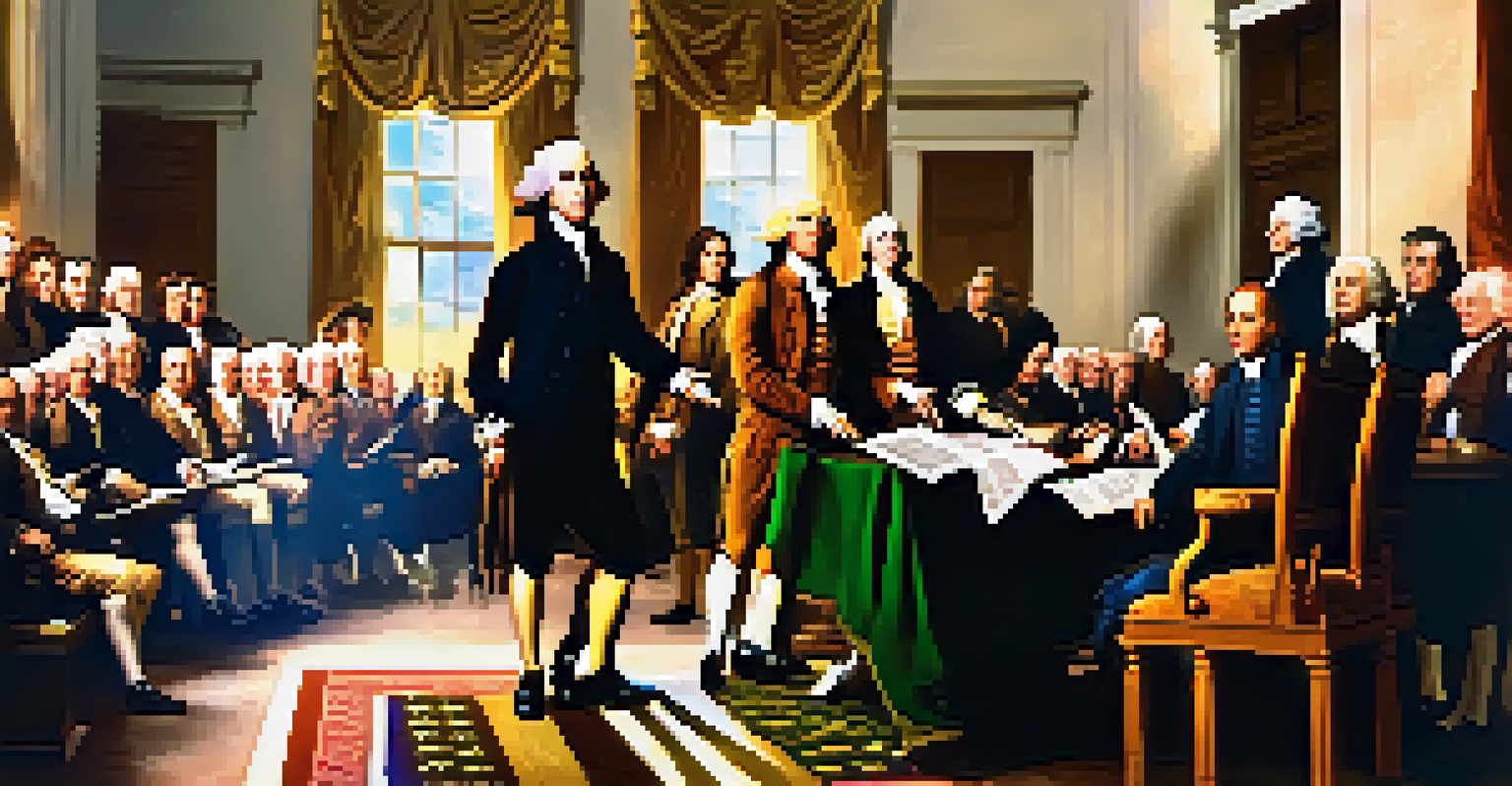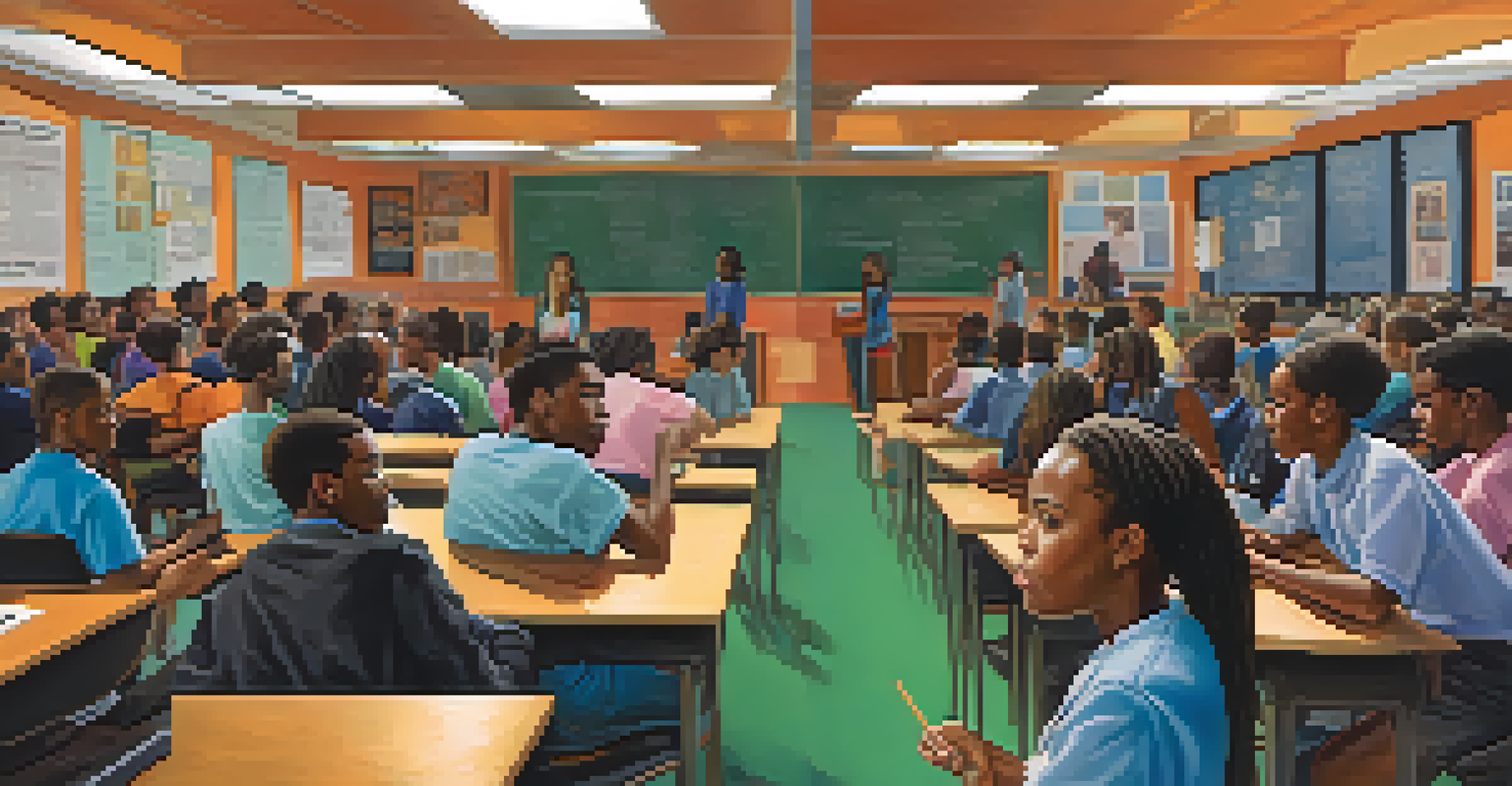Using VR to Teach Historical Events: A New Perspective

Understanding the Potential of VR in Education
Virtual reality (VR) is revolutionizing the way we learn, especially in history. By immersing students in a 3D environment, VR allows them to experience historical events firsthand, rather than just reading about them. Imagine walking through ancient Rome or standing on the battlefield of Gettysburg—this kind of engagement makes learning memorable and enjoyable.
Virtual reality is not just a new way of learning; it's a new way of thinking about learning.
Incorporating VR into education not only enhances engagement but also caters to different learning styles. Visual learners can benefit from the immersive imagery, while kinesthetic learners thrive in interactive environments. This dynamic approach encourages students to explore and question the past in a way traditional textbooks cannot.
Moreover, VR promotes empathy by placing students in the shoes of historical figures. Experiencing events from different perspectives cultivates a deeper understanding of history's complexity, sparking meaningful discussions about the past's relevance in today's world.
Creating Immersive Historical Experiences
The heart of VR’s appeal lies in its ability to craft immersive experiences. Educators can design virtual field trips that transport students to significant historical sites, allowing them to explore and interact with their surroundings. For instance, a VR simulation of the signing of the Declaration of Independence can make students feel part of that pivotal moment in history.

By utilizing 360-degree videos and interactive simulations, students can witness historical narratives unfold before their eyes. This not only captures their attention but also encourages active participation and inquiry. For example, students can engage with artifacts and even converse with virtual characters from the past, deepening their understanding.
VR Enhances Historical Learning
Virtual reality immerses students in historical events, making learning more engaging and memorable.
These immersive experiences are particularly beneficial for students who might struggle with traditional learning methods. By making history accessible and engaging, VR helps bridge educational gaps, ensuring all students have the chance to connect with their heritage.
Bridging the Gap Between Past and Present
VR serves as a powerful tool for connecting students with history in a meaningful way. It allows them to see the direct impact of historical events on the present day. For example, exploring the civil rights movement through VR can help students understand the ongoing struggles for equality and justice.
Education is the most powerful weapon which you can use to change the world.
This connection fosters critical thinking, encouraging students to reflect on how past events shape current societal issues. By analyzing historical contexts, they can draw parallels to modern challenges, making their learning experience relevant and impactful.
Moreover, discussing these connections in class can lead to rich conversations about responsibility and citizenship. Students can explore how their actions today might influence the future, creating a sense of agency in their learning journey.
Challenges and Limitations of VR in Education
While VR offers incredible opportunities, it's essential to acknowledge the challenges it presents. One significant barrier is the cost of VR technology, which can be prohibitive for many schools. Not all classrooms are equipped with the necessary hardware or software, limiting access to these innovative tools.
Additionally, teachers may require training to effectively integrate VR into their lesson plans. Without proper guidance, the technology can become overwhelming, leaving educators unsure of how to harness its full potential. Ensuring that teachers feel confident using VR is crucial for its success in the classroom.
Overcoming Educational Barriers
Despite its potential, VR faces challenges like cost and the need for teacher training to ensure effective implementation.
Lastly, there's the concern of VR's impact on social interaction. While immersive experiences are engaging, it's important to balance them with collaborative learning activities. Students should have opportunities to discuss their experiences and insights with peers to foster social skills and deeper understanding.
The Role of Educators in VR Implementation
Teachers play a pivotal role in the successful implementation of VR in education. They are responsible for curating content that aligns with curriculum standards while ensuring that VR experiences are educational and engaging. By selecting appropriate historical simulations, educators can enhance students' learning experiences.
Moreover, teachers can facilitate discussions around the VR content, encouraging students to analyze and interpret what they’ve experienced. This helps students develop critical thinking skills, as they learn to question and reflect on the information presented to them.
Another vital aspect is ensuring that the technology is used ethically and responsibly. Educators must guide students in understanding the limitations and biases that may exist in virtual representations of history, fostering a more nuanced understanding of the past.
Future Trends in VR for Historical Education
As technology continues to evolve, the future of VR in historical education looks promising. We can expect advancements that will make VR more accessible and affordable for schools, opening the door for broader implementation. Companies are already working on developing mobile VR options that can be used with smartphones, further democratizing access.
Additionally, we may see an increase in collaborative VR experiences, where students from different locations can participate simultaneously in historical simulations. This could enhance global understanding and foster connections between diverse cultures, enriching the learning experience.
Future of VR in Education
Advancements in VR technology promise greater accessibility and collaborative experiences in historical education.
Finally, the integration of augmented reality (AR) alongside VR could provide even more interactive learning opportunities. Imagine students exploring their local history through AR overlays, seeing historical events play out in real time within their own environments. The possibilities are endless, making history more engaging and relevant than ever.
Conclusion: Embracing VR in Historical Education
In conclusion, using VR to teach historical events offers a fresh perspective that can transform education. By engaging students in immersive experiences, we create a deeper understanding of history that resonates with them on multiple levels. The potential for empathy, critical thinking, and real-world connections is enormous.
While challenges exist, the benefits of integrating VR into historical education are too significant to overlook. With the right support and resources, educators can harness this technology to enrich their teaching and inspire the next generation of learners.

As we look to the future, embracing VR in the classroom can pave the way for innovative educational practices. By taking this leap, we can ensure that history is not just a subject to be studied but an experience to be lived and understood.